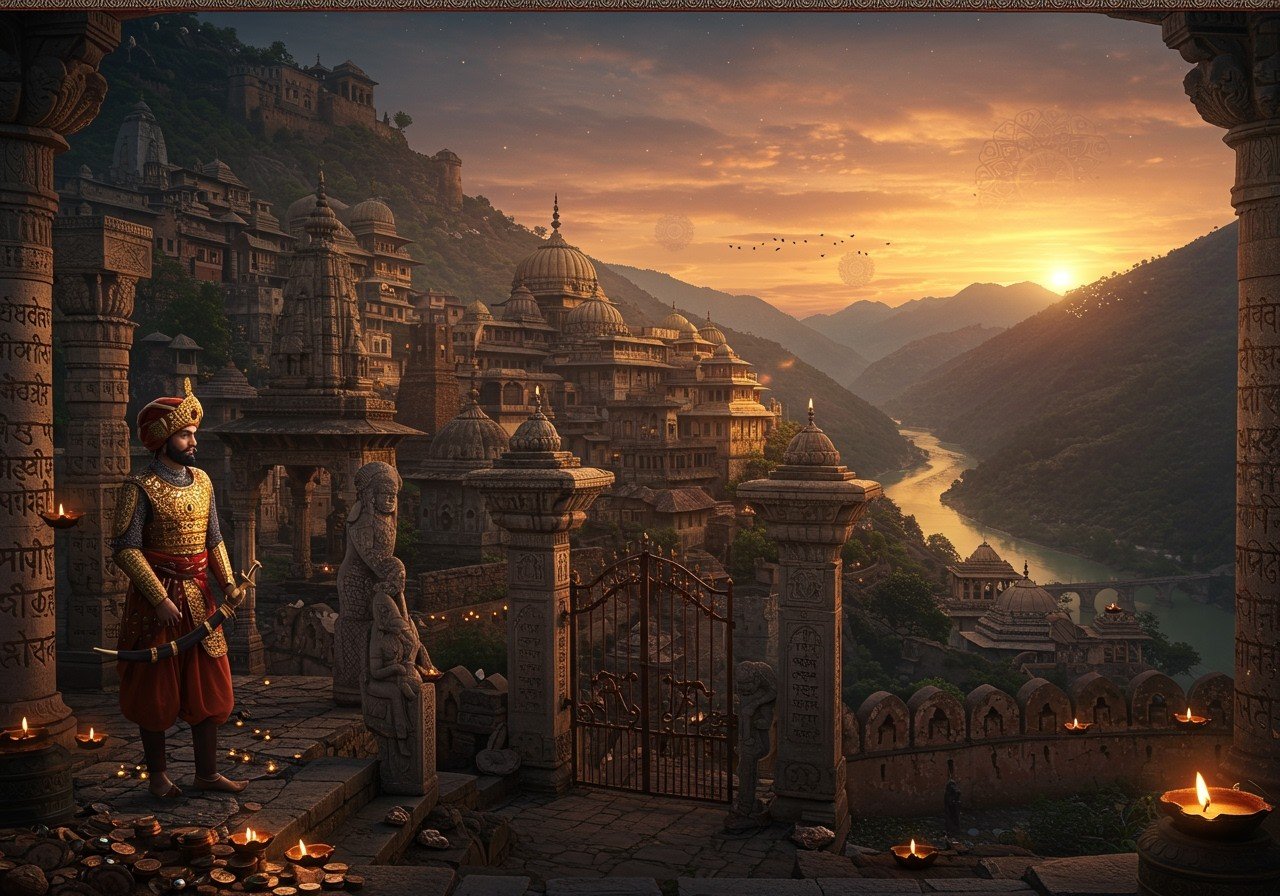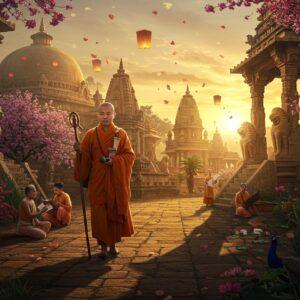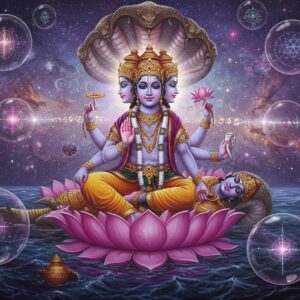
Jammu, a land steeped in history and tradition, invites us to explore its captivating past. Beyond the renowned Deva Dynasty, numerous ancient kingdoms have graced this region, leaving behind a legacy that resonates even today. This exploration into Jammu’s vibrant history allows us to appreciate its cultural richness and understand the diverse influences that have shaped its identity.
Unveiling Jammu’s Ancient Past
Jammu’s history, even before the Deva Dynasty, is marked by its strategic location, serving as a cultural crossroads for centuries. Early settlements in this region were influenced by ancient civilizations, including the Indus Valley. Archaeological discoveries provide valuable insights into Jammu’s prehistoric era, revealing glimpses of life in ancient times. Key historical texts mention Jammu as a vital center of trade and culture in early Indian history. These records and artifacts underscore Jammu’s early significance as a melting pot where diverse cultures interacted and flourished, setting the stage for the dynasties that followed, each adding a unique thread to the intricate tapestry of Jammu’s history. Understanding this ancient past is crucial for appreciating the subsequent developments during the Deva Dynasty and beyond.
The Reign of the Deva Dynasty
The Deva Dynasty occupies a prominent place in the annals of Jammu’s history. Their reign witnessed remarkable political and cultural achievements, leaving an indelible mark on the region. The rulers of this era significantly contributed to Jammu’s architectural landscape, with temples and forts standing as testaments to their grandeur and vision. During the Deva Dynasty, Jammu thrived not only as a political center but also as a vibrant cultural hub. The dynasty’s influence profoundly shaped the region’s artistic expressions and time-honored traditions, paving the way for future dynasties. However, as with all empires, their reign eventually drew to a close.
The Transition of Power: Post-Deva Dynasty
Following the Deva Dynasty’s decline, Jammu experienced a series of power shifts. In 1812, the Sikh Empire annexed Jammu, ushering in a new chapter in the region’s history. The Sikhs brought their own distinct cultural and administrative practices, leading to a period of both conflict and cultural fusion. As the Sikh influence waned, the Dogra Dynasty emerged under the leadership of Maharaja Gulab Singh in 1846. His reign marked an era of consolidation and growth for Jammu, witnessing significant political and economic progress.
- Sikh Empire Annexation (1812): The Sikh Empire’s annexation of Jammu in 1812 marked a pivotal moment, signifying the end of the Deva Dynasty’s rule and the beginning of a new era under Sikh influence. This transition brought about significant changes in administration and cultural practices.
- Dogra Dynasty (1846): Maharaja Gulab Singh’s establishment of the Dogra Dynasty in 1846 ushered in a period of stability and expansion for Jammu. Under Dogra rule, the region experienced notable political and economic advancements.
- British Influence: The British, after gaining control of Kashmir from the Sikhs, sold it to Maharaja Gulab Singh of Jammu under the Treaty of Amritsar. This transaction cemented British influence in the region and led to Gulab Singh’s recognition as the independent ruler of Kashmir.
- Jammu as Winter Capital (1872): During Maharaja Gulab Singh’s reign, Jammu gained prominence as the winter capital of the princely state of Jammu & Kashmir in 1872, reflecting its growing importance within the region.
- Post-Partition: In the aftermath of India’s partition, Jammu became an integral part of independent India following the Kashmir War, solidifying its place within the newly formed nation.
Other Dynasties and Their Influence
Beyond the prominent dynasties, lesser-known rulers also left their mark on Jammu’s history. The Shahi dynasty, for instance, enriched the region’s diverse cultural heritage. External powers, including the Mughals and the Sikhs, also played a significant role, their influence evident in Jammu’s art and architecture. These various rulers introduced new administrative systems, sometimes sparking local resistance and uprisings. This period of change and upheaval played a unique role in shaping Jammu’s distinct identity.
Jammu’s Enduring Cultural Legacy
The successive dynastic periods have bequeathed a rich cultural legacy to Jammu. Ancient festivals, rituals, and traditions continue to thrive today, passed down through generations. Architectural marvels from these eras attract visitors and scholars alike, providing glimpses into the past. Ongoing efforts to preserve Jammu’s historical sites are vital, with local communities playing a crucial role in safeguarding this invaluable heritage. Jammu’s dynastic history contributes significantly to the broader cultural fabric of India.
Poojn.in: Your Partner in Preserving Jammu’s Sacred Heritage
At Poojn.in, we cherish the rich spiritual heritage of Jammu. We offer a wide selection of authentic puja items and ritual materials, carefully curated to support your connection to these traditions. Our collection includes traditional items that resonate with the region’s deep-rooted worship practices, especially those related to Lord Rama and Lord Parashurama, both figures deeply connected to Jammu’s history and revered by its people.
For devotees honoring Jammu’s ancient traditions, we offer:
- Complete puja samagri kits, ensuring you have everything needed for your sacred rituals.
- Pure copper and brass items, crafted with meticulous care and reverence.
- Traditional dhoop and agarbatti sourced locally, adding an authentic touch to your prayers.
- Specially curated items for Jammu temples’ rituals, honoring specific customs and practices.
Connect with us to explore our offerings:
- Website: www.poojn.in
- Phone: 03369029784
- WhatsApp: 9476142738
Our dedicated team of experts is available to guide you in selecting the right puja items that align with Jammu’s traditional practices. We ensure secure packaging and doorstep delivery across India, preserving the sanctity of all items. For bulk orders for temples or community events, we offer personalized assistance and customized packages. All products are backed by our commitment to quality and come with authenticity certificates where applicable.
Visit Poojn.in today to discover our comprehensive range of traditional puja items, helping you uphold Jammu’s sacred customs and rituals.
Embracing Jammu’s Timeless Heritage
Jammu’s history is a vibrant tapestry woven with the threads of dynasties and cultural exchanges. From the majesty of the Deva Dynasty to the resilience of the Dogras, each era has left an enduring mark on this captivating region. These historical narratives remind us of the strength and diversity that define Jammu’s unique identity. Today, Jammu’s rich past continues to inspire its people. Festivals, rituals, and traditions echo the wisdom of ancient times, forging a profound connection between generations and preserving the heritage of their ancestors. As we explore Jammu’s historical landmarks or participate in its vibrant festivals, we embark on a journey through time, honoring the resilience and cultural richness of this remarkable region. By understanding and preserving Jammu’s heritage, we ensure that its legacy continues to illuminate the path for future generations. Let us cherish and protect this cultural treasure, embracing the valuable lessons and enduring beauty it offers.
FAQs: Delving Deeper into Jammu’s History
What made the Deva Dynasty so important in Jammu’s history? The Deva Dynasty was pivotal in shaping Jammu’s early history, establishing a powerful kingdom that laid the foundation for future rulers and influencing the region’s political and cultural development.
Which dynasties governed Jammu after the Deva Dynasty? Several dynasties ruled Jammu following the Deva Dynasty, most notably the Dogras, renowned for their contributions to the region’s culture and architecture. Other rulers and empires, including the Sikhs and Mughals, also played a significant role in shaping Jammu’s historical trajectory.
How did the ancient kingdoms of Jammu shape the region’s culture? The ancient kingdoms of Jammu profoundly influenced the region’s culture through their distinct traditions, art forms, and architectural styles. Their contributions have enriched Jammu’s cultural tapestry, creating a vibrant mosaic of influences.
What was Jammu’s significance in ancient India? Due to its strategic location, Jammu held a significant position in ancient India. It served as a crucial hub for trade and cultural exchange, connecting various parts of the subcontinent and beyond.
Are there any notable historical sites from the Deva Dynasty period in Jammu? Yes, Jammu boasts several historical sites from the Deva Dynasty period, including ancient temples and forts that showcase the distinctive architectural features of that era. These sites offer valuable insights into the dynasty’s reign and cultural contributions. For a deeper understanding of Chandela Dynasty architecture, explore our blog post on the Kandariya Mahadeva Temple legacy: https://www.poojn.in/post/17737/chandela-dynasty-architecture-the-kandariya-mahadeva-temple-legacy.
How can I learn more about Jammu’s ancient past? You can delve deeper into Jammu’s ancient history by visiting local museums, exploring historical sites firsthand, and immersing yourself in books and resources dedicated to the region’s rich past. For those interested in the architectural wonders of the Sas-Bahu temples, our guide offers detailed insights: https://www.poojn.in/post/17740/sas-bahu-temples-a-guide-to-their-architectural-wonders.
Why is it important to understand Jammu’s ancient history? Understanding Jammu’s ancient history provides valuable context for appreciating the region’s present-day cultural heritage and recognizing the contributions of various dynasties to the broader narrative of Indian history. You can delve into the history of specific temples like the Mahamaya Temple in Ratanpur: https://www.poojn.in/post/16647/mahamaya-temple-ratanpur-a-visitors-guide or the Mahamaya Temple in Jammu: https://www.poojn.in/post/16650/mahamaya-temple-jammu-a-complete-shakti-peeth-guide.
How have Jammu’s ancient kingdoms shaped the region we know today? The ancient kingdoms of Jammu have indelibly shaped the region’s modern identity through their enduring cultural and architectural influences, forming the bedrock of the traditions and characteristics we see in Jammu today. Poojn.in offers a curated collection of brass idols of deities like Panchmukhi Hanuman and Lord Kubera, reflecting the region’s spiritual traditions: Panchmukhi Hanuman, Panchmukhi Hanuman, Lord Kubera, Panchmukhi Hanuman, and Panchmukhi Hanuman.


